Altering the course of an aircraft carrier doesn’t happen quickly, and Harley-Davidson is like an aircraft carrier. To move its 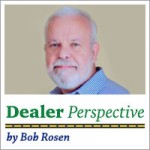 direction requires a deliberate strategy and forceful implementation of a comprehensive action plan. The course can be altered, but only if the officers on the bridge want it to happen.
direction requires a deliberate strategy and forceful implementation of a comprehensive action plan. The course can be altered, but only if the officers on the bridge want it to happen.
That’s a big “if” when looking at Harley-Davidson. Not surprisingly, during this morning’s conference call / financial review of 2015, Harley-Davidson’s CEO Matt Levatich and CFO John Olin revealed the details of a mostly off year for the market leader in the heavy motorcycle market.
Citing increased pressure from competition and “macro-economic challenges,” senior management provided specifics in key areas of the business. While there was some improvement in fourth quarter results – specifically increased gross margin and a 3.1% increase in international sales – the news was mostly a downer. Almost all fourth quarter data pointed to a weaker performance.
More importantly, total year 2015 results show that it was not a great year for Harley-Davidson compared to 2014:
Total motorcycle revenue was down 4.7 percent.
The number of motorcycles shipped in the U.S. dropped by 1.7 percent – from 171,100 in 2014 to 168,200 in 2015.
Faced with increased competition in their segment, Harley-Davidson’s market share in the +600cc market dropped from 53.3 percent to 50.2 percent. This ended a five-year run of annual market share increases and, for the first time since 2009, points to the possibility of Harley-Davidson slipping below 50 percent market share.
As always during these business reviews, Harley senior management emphasized every indication of good news or positive trends. The never-ending rollout of “new” models (like yesterday’s Low Rider S and CVO Pro Street Breakout) was cited as a good thing.
Harley-Davidson plans to increase dealer participation in the Rider Academy program, which brings new riders to the brand. Currently, only some of its 700 U.S. dealers support this effort. Harley-Davidson is looking to continue their international success by adding 150-200 new dealers overseas by 2020. Some 40 new international dealers were added in 2015.
As we would expect, Harley-Davidson management is fully invested in the tradition and brand position of their product line – as they should be. This is a company that has a 113-year history of selling a specific range of products to a well-defined audience. The marketplace, however, is dynamic and the demand for new products by new buyers can shift the ground under the feet of companies who prefer to “stick to their knitting.”
Harley-Davidson management emphasized that they are allocating an additional $70 million to “brand awareness and product development,” although we don’t know how much of that substantial investment is going to product development and how much is going to brand awareness.
However, after the recent departure of marketing chief Mark-Hans Richer, H-D announced that they would be increasing marketing expenditures by 65% in 2016.
The one thing Harley-Davidson really doesn’t need more of is brand awareness. More “lifestyle” magazine ads and image building is not going to take Harley-Davidson where it needs to go. While it’s true that Indian, and perhaps other brands, are picking up market share – they’re fighting for an increased share of a decreasing market. This is not the recipe for success.
One possible solution? Harley-Davidson should take a bunch of that marketing money and turn it over to the product development guys. The changing demographic in the marketplace needs fewer variations on an old theme and more of the excitement that can be delivered by new, innovative products.
If they and their dealers get behind the 500 and 750 Street models, they can bring some new faces (and new money) into the Harley-Davidson family.
More product line extensions will expand their reach, too. Yes, they tried that once with Buell – and don’t even think that the MV Agusta fiasco was anything more than a blip on the radar screen. The Buell product line was never embraced by the Harley-Davidson dealer community. Calling Buell a red-headed stepchild is being kind.
As I said, altering the course of an aircraft carrier can’t happen quickly, and can only happen if the officers on the bridge want it to happen. While there is a myth behind Harley-Davidson, if those inside the halls of Harley-Davidson buy into it too much, the ship won’t get turned.
In case you’re interested, here’s Harley-Davidson’s press release on its fourth quarter and 2015 results:
MILWAUKEE, Jan. 28, 2016 /PRNewswire/ — Harley-Davidson, Inc. (NYSE: HOG) full-year 2015 diluted earnings per share decreased 4.9 percent to $3.69 compared to diluted EPS of $3.88 in 2014. Net income was $752.2 million on consolidated revenue of $6.0 billion compared to full-year 2014 net income of $844.6 million on consolidated revenue of $6.23 billion. In the fourth quarter of 2015, diluted EPS was $0.22 compared to $0.35 in the prior year period. Fourth quarter net income was $42.2 million on consolidated revenue of $1.18 billion compared to net income of $74.5 million on consolidated revenue of $1.20 billion in the year-ago period.
“We are focused, with strength and resolve, on growing demand and building on our substantial market leadership position,” said Matt Levatich, President and Chief Executive Officer, Harley-Davidson, Inc. “Although we expect the macro-economic environment to remain challenging, we are confident we’ll continue to lead with our powerful brand – not simply because of our substantial strengths but through our increased demand driving investments and our incredibly talented and passionate employees and dealers.”
Throughout 2015, Harley-Davidson retail motorcycle sales were adversely affected by heightened competitive pressures including those arising from shifts in world currencies.
In October, the company unveiled plans to increase its customer-facing marketing investment, starting in 2016, by approximately 65 percent over 2015 levels, and to increase its investment in new product development by approximately 35 percent from 2015. These changes represent an approximate $70 million increase in investments to drive demand compared to 2015. The increased investments are focused in four areas: increasing product and brand awareness; growing new ridership in the U.S.; increasing and enhancing brand access; and accelerating the cadence and impact of new products.
| Retail Harley-Davidson Motorcycle Sales | ||||||
| 4th Quarter | Full Year | |||||
| 2015 | 2014 | Change | 2015 | 2014 | Change | |
| Americas Region | ||||||
| U.S. | 26,044 | 26,957 | (3.4)% | 168,240 | 171,079 | (1.7)% |
| Latin America | 3,082 | 3,130 | (1.5)% | 11,173 | 11,652 | (4.1)% |
| Canada | 1,255 | 1,118 | 12.3% | 9,669 | 9,871 | (2.0)% |
| Europe, Middle East, Africa (EMEA) Region | 7,689 | 7,823 | (1.7)% | 43,287 | 45,323 | (4.5)% |
| Asia Pacific Region | 8,787 | 8,121 | 8.2% | 32,258 | 30,074 | 7.3% |
| Worldwide Total | 46,857 | 47,149 | (0.6)% | 264,627 | 267,999 | (1.3)% |
Retail Motorcycle Sales Highlights: In the fourth quarter, Harley-Davidson’s U.S. market share was 51.4 percent in the 601cc-plus category, flat compared to the year ago period.
“Our U.S. market share stabilized as we began to ramp up marketing investment, and as we lapped the initial impact of heightened competitiveness and price discounting that began late in the fourth quarter of 2014,” said Levatich.
Retail Harley-Davidson motorcycle sales in Canada grew 12.3 percent in the quarter, following the company’s move to direct distribution in the market. The Asia Pacific region had its best year ever for dealer sales of new Harley-Davidson motorcycles. For the full year, Harley-Davidson was number one in market share in the 601cc-plus segment in the U.S., Canada, Australia, India and Japan.
| Motorcycles and Related Products Segment Results | ||||||
| $ in thousands | 4th Quarter | Full Year | ||||
| 2015 | 2014 | Change | 2015 | 2014 | Change | |
| Motorcycle Shipments (vehicles) | 48,149 | 47,157 | 2.1% | 266,382 | 270,726 | -1.6% |
| Revenue | ||||||
| Motorcycles | $751,383 | $784,535 | -4.2% | $4,127,739 | $4,385,863 | -5.9% |
| Parts & Accessories | $169,707 | $165,581 | 2.5% | $862,645 | $875,019 | -1.4% |
| General Merchandise | $79,356 | $75,044 | 5.7% | $292,310 | $284,826 | 2.6% |
| Gross Margin Percent | 31.9% | 30.5% | 1.4 pts | 36.8% | 36.4% | 0.4 pts |
| Operating Income | $6,368 | $35,885 | -82.3% | $875,490 | $1,003,147 | -12.7% |
| Operating Margin Percent | 0.6% | 3.5% | -2.9 pts | 16.5% | 18.0% | -1.5 pts |
Segment Results Key Drivers: During the fourth quarter, revenue from motorcycles and related products was down versus the prior year on unfavorable mix and currency exchange, partially offset by the benefit of higher shipments. The decrease in operating income for the quarter was primarily driven by higher SG&A spending, partially offset by a strong gross margin percent.
| Financial Services Segment Results | ||||||
| $ in thousands | 4th Quarter | Full Year | ||||
| 2015 | 2014 | Change | 2015 | 2014 | Change | |
| Revenue | $173,565 | $169,007 | 2.7% | $686,658 | $660,827 | 3.9% |
| Operating Income | $60,857 | $62,448 | -2.5% | $280,205 | $277,836 | 0.9% |
Segment Results Key Drivers: Financial services operating income fell slightly in the fourth quarter of 2015 compared to the year-ago period on a higher provision for retail credit loan losses, largely offset by strong net interest income.
Guidance
Harley-Davidson expects to ship 269,000 to 274,000 motorcycles in 2016, an approximate 1 percent to 3 percent increase from 2015 shipments. In the first quarter of 2016, the company expects to ship 78,000 to 83,000 motorcycles compared to 79,589 motorcycles shipped in the year-ago period. The company expects full-year 2016 operating margin of approximately 16 to 17 percent for the Motorcycles segment. The company expects 2016 capital expenditures for Harley-Davidson, Inc. of $255 million to $275 million.
Income Tax Rate
For the full year 2015, Harley-Davidson’s effective tax rate was 34.6 percent compared to 34.2 percent in 2014. The company expects its full-year 2016 effective tax rate will be approximately 34.5 percent.
Cash Flow
Cash and marketable securities totaled $767.4 million at year-end 2015 compared to $964.0 million at year-end 2014. In 2015, Harley-Davidson generated $1.10 billion of cash from operating activities compared to $1.15 billion in 2014. On a discretionary basis, the company repurchased 12.7 million shares of Harley-Davidson, Inc. common stock during the fourth quarter of 2015 at a cost of $642.4 million. For the full year 2015, Harley-Davidson repurchased 27.9 million shares of its common stock at a cost of $1.53 billion, partially funded by a $750 million debt issuance. In the fourth quarter of 2015, there were approximately 190.6 million weighted-average diluted Harley-Davidson common shares outstanding. At the end of 2015, 9.0 million shares remained on board-approved share repurchase authorizations.
 Ride CT & Ride New England Serving New England, NYC and The Hudson Valley!
Ride CT & Ride New England Serving New England, NYC and The Hudson Valley!
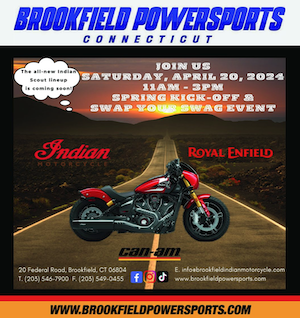


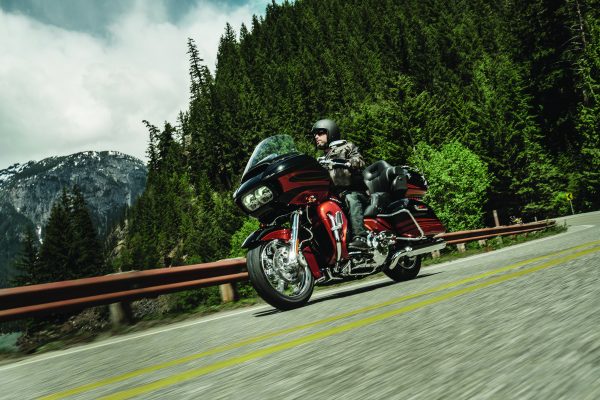
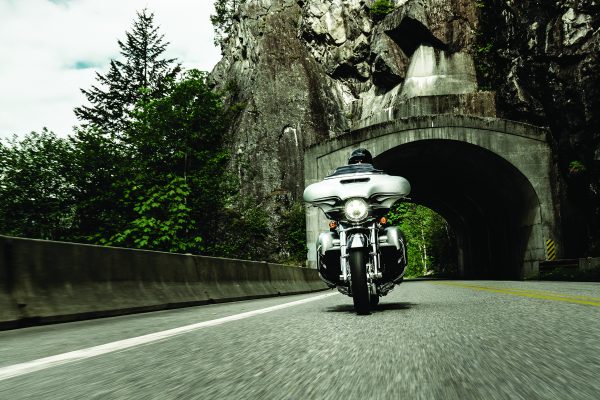

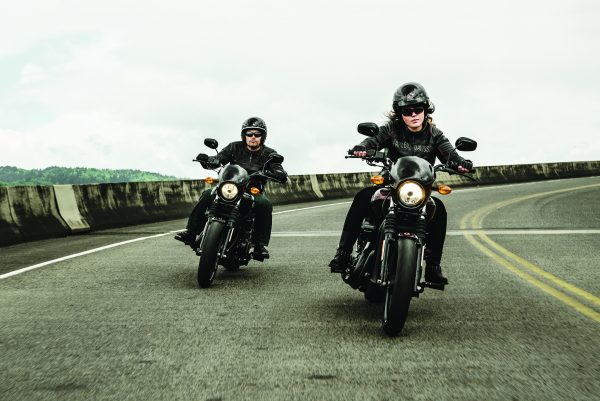

Agreed that marketing and imaging (Brand Awareness) doesn’t need a part of that $70 million. H-D is pretty well known to say the least. They introduced two new models this week, which look great by the way. But at a cost of $16,000 and $26,000 respectively? I’d like it if they took some of that $70 million and made their machines more affordable. No one I know can afford a new H-D. Or maybe it’s an exclusivity thing. How about this idea: What if they took that $70 million and put it towards a campaign to convince the public that fuel injection and throttle by wire (etc.) is better than the old way? That might change some old school thinkers and increase sales.